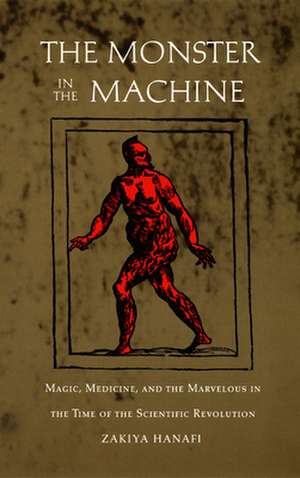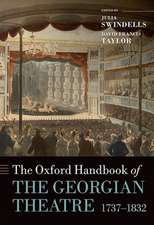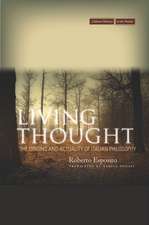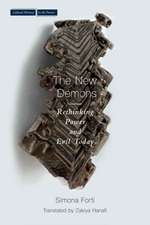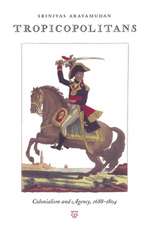The Monster in the Machine – Magic, Medicine, and the Marvelous in the Time of the Scientific Revolution
Autor Zakiya Hanafien Limba Engleză Paperback – 24 oct 2000
Explaining that the word "monster" is derived from the Latin for "omen" or "warning," Hanafi begins with an exploration of the monster's early identity as a portent or messenger from God. While monsters have always been considered "whatever we are not," they were gradually thought of more as mechanical devices when new discoveries in science and medicine began to reveal the mechanical nature of the human body itself. In analysing the historical literature of monstrosity, magic, and museum collections, Hanafi uses contemporary theory and philosophy of technology to illuminate the timeless significance of the monster theme. She elaborates the association within medical literature between women and the monstrous and sheds new light on the work of Vico - particularly his notion of the conatus - by analysing it in relation to Vico's own personal health. By explicating obscure and fascinating texts from such disciplines as medicine and poetics, she invites the reader to the piazzas and pulpits of seventeenth-century Naples, where poets, courtiers, and Jesuit preachers used grotesque figures of speech to captivate their audiences with their monstrous wit.
Drawing from a variety of texts from medicine, moral philosophy, and poetics, Hanafi's guided tour through this baroque museum of ideas will interest readers in comparative literature, Italian literature, history of ideas, history of science, art history, poetics, women's studies, and philosophy.
Preț: 265.59 lei
Nou
Puncte Express: 398
Preț estimativ în valută:
50.82€ • 55.38$ • 42.82£
50.82€ • 55.38$ • 42.82£
Carte tipărită la comandă
Livrare economică 23 aprilie-07 mai
Preluare comenzi: 021 569.72.76
Specificații
ISBN-13: 9780822325680
ISBN-10: 0822325683
Pagini: 288
Ilustrații: 16 illustrations
Dimensiuni: 153 x 233 x 25 mm
Greutate: 0.49 kg
Ediția:New.
Editura: MD – Duke University Press
ISBN-10: 0822325683
Pagini: 288
Ilustrații: 16 illustrations
Dimensiuni: 153 x 233 x 25 mm
Greutate: 0.49 kg
Ediția:New.
Editura: MD – Duke University Press
Cuprins
List of Illustrations
>Foreword
>Acknowledgments
Introduction
Chapter 1: Monstrous Matter
Chapter 2: Monstrous Machines
Chapter 3: Medicine and the Mechanical Body
Chapter 4: Vico’s Monstrous Body
Chapter 5: Monstrous Metaphor
Afterword
Notes
Works Consulted
Index
>Foreword
>Acknowledgments
Introduction
Chapter 1: Monstrous Matter
Chapter 2: Monstrous Machines
Chapter 3: Medicine and the Mechanical Body
Chapter 4: Vico’s Monstrous Body
Chapter 5: Monstrous Metaphor
Afterword
Notes
Works Consulted
Index
Recenzii
"A well-researched, engagingly written, rich, and enlightening study." - Deanna Shemek, University of California, Santa Cruz
"This is a superlative and highly inventive piece of scholarship." - Giuseppe F. Mazzotta, Yale University"For the general audience, the book is written in lucid, highly engaging prose to narrate the story of how the 'monster' (which we demarcate ourselves against) in effect becomes the machine (which we construct)."Caroline Joan (Kay) Picart, The Review of Communication"I thoroughly enjoyed reading the book."Caroline Joan (Kay) Picart, Review of CommunicationBy explicating obscure and fascinating texts from such disciplines as medicine and poetics, she invites the reader to the piazzas and pulpits of 17th-century Naples, where poets, courtiers, and Jesuit preachers used grotesque figures of speech to captivate audiences with their monstrous wit.Tech DirectionsWonderfully dense and highly connective, The Monster in the Machine is a complex, provocative, and masterfully written piece of scholarship that rewards careful attention.Andrea Jones, Comitatus[A]n insightful lesson in Early Modern thinking with monsters. . . . The Monster in the Machine stands out as an exceptionally readable and enjoyable essay on seicento (mostly) Italian intellectual history, guiding its readers through a great number of colorful places.Georg Modestin, H-Net Reviews[Hanafis] tour of the horizon, making comments and connections, is of significance not only forward to our so-called postmodern thinking but backward to The Renaissance.Bibliothéque D Humanisme et RenaissanceThroughout the volume an extremely broad range of sources is brought to life, and this will certainly help scholars of the seventeenth-century widen the geographical reach of their research and cross some still-too-rigid disciplinary boundaries.Silvia De Renzi, Bulletin of the History of Medicine[T]hought-provoking, like a good conversation, . . . Hanafis work will be of interest to historians and literary scholars of monstrosity in the early modern period, as well as students and admirers of the culture of baroque Italy.William E. Burns, Sixteenth Century Journal"[I]nteresting and important . . . ." Sophie Page, Isis"[M]eticulous and informedsometimes even inspired. . . . Wide-ranging in its coverage and application, the book is excellent, especially in its early chapters, and represents a revealing studypenetrating enough for the specialist, general enough for the novice. . . . Hanafis contribution in this book lies not solely in her fine analysis of individual early modern texts, but also in the general approaches to the monstrous that she provides. . . . Hanafi has certainly succeeded in providing an accessible, compelling, deftly executed study of the early modern monster that, while perhaps of greatest interest to the scholar of Italian teratology, should resonate with scholars across the humanities."Andrew Tumminia, Configurations"[A]n original and fascinating study of monstrosity that blends nicely with other historical works both on early modern Italian history of science and on studies devoted to the wondrous. . . . [A]n exciting entrée into the changing nature of monsters and, by association, of humanity."Michael R. Lynn, Journal of the History of Medicine
"This is a superlative and highly inventive piece of scholarship." - Giuseppe F. Mazzotta, Yale University"For the general audience, the book is written in lucid, highly engaging prose to narrate the story of how the 'monster' (which we demarcate ourselves against) in effect becomes the machine (which we construct)."Caroline Joan (Kay) Picart, The Review of Communication"I thoroughly enjoyed reading the book."Caroline Joan (Kay) Picart, Review of CommunicationBy explicating obscure and fascinating texts from such disciplines as medicine and poetics, she invites the reader to the piazzas and pulpits of 17th-century Naples, where poets, courtiers, and Jesuit preachers used grotesque figures of speech to captivate audiences with their monstrous wit.Tech DirectionsWonderfully dense and highly connective, The Monster in the Machine is a complex, provocative, and masterfully written piece of scholarship that rewards careful attention.Andrea Jones, Comitatus[A]n insightful lesson in Early Modern thinking with monsters. . . . The Monster in the Machine stands out as an exceptionally readable and enjoyable essay on seicento (mostly) Italian intellectual history, guiding its readers through a great number of colorful places.Georg Modestin, H-Net Reviews[Hanafis] tour of the horizon, making comments and connections, is of significance not only forward to our so-called postmodern thinking but backward to The Renaissance.Bibliothéque D Humanisme et RenaissanceThroughout the volume an extremely broad range of sources is brought to life, and this will certainly help scholars of the seventeenth-century widen the geographical reach of their research and cross some still-too-rigid disciplinary boundaries.Silvia De Renzi, Bulletin of the History of Medicine[T]hought-provoking, like a good conversation, . . . Hanafis work will be of interest to historians and literary scholars of monstrosity in the early modern period, as well as students and admirers of the culture of baroque Italy.William E. Burns, Sixteenth Century Journal"[I]nteresting and important . . . ." Sophie Page, Isis"[M]eticulous and informedsometimes even inspired. . . . Wide-ranging in its coverage and application, the book is excellent, especially in its early chapters, and represents a revealing studypenetrating enough for the specialist, general enough for the novice. . . . Hanafis contribution in this book lies not solely in her fine analysis of individual early modern texts, but also in the general approaches to the monstrous that she provides. . . . Hanafi has certainly succeeded in providing an accessible, compelling, deftly executed study of the early modern monster that, while perhaps of greatest interest to the scholar of Italian teratology, should resonate with scholars across the humanities."Andrew Tumminia, Configurations"[A]n original and fascinating study of monstrosity that blends nicely with other historical works both on early modern Italian history of science and on studies devoted to the wondrous. . . . [A]n exciting entrée into the changing nature of monsters and, by association, of humanity."Michael R. Lynn, Journal of the History of Medicine
Notă biografică
Zakiya Hanafi is an independent scholar who divides her time between Seattle, Washington, and Venice, Italy.
Textul de pe ultima copertă
"A well-researched, engagingly written, rich, and enlightening study."--Deanna Shemek, author of "Ladies Errant: Wayward Women and Social Order in Early Modern Italy"
Descriere
A study of monstrosity and baroque poetics in the cultural context of 17-century Italy.
